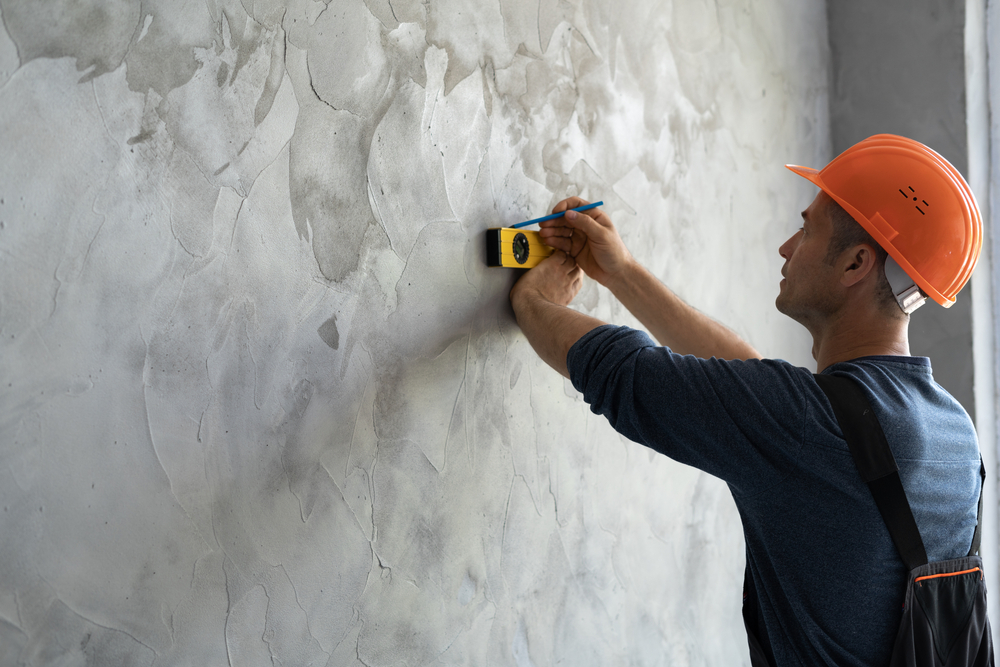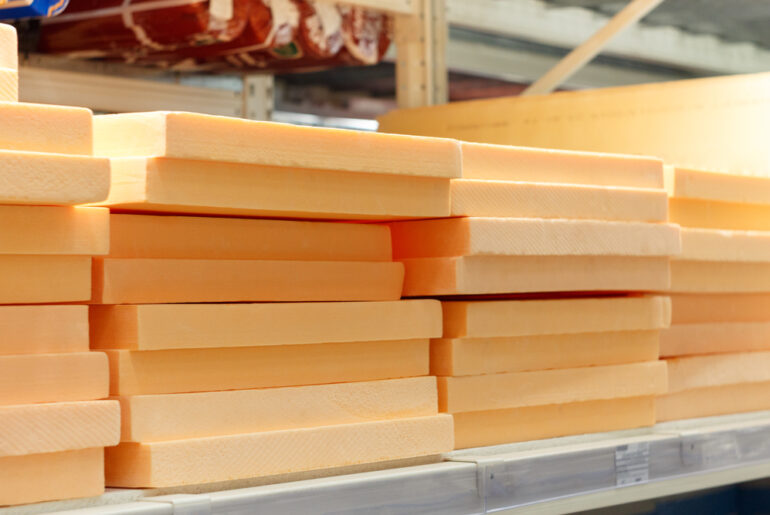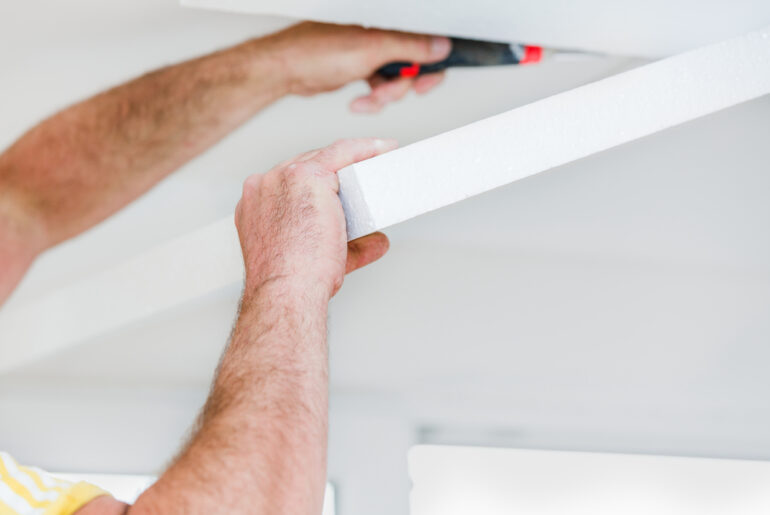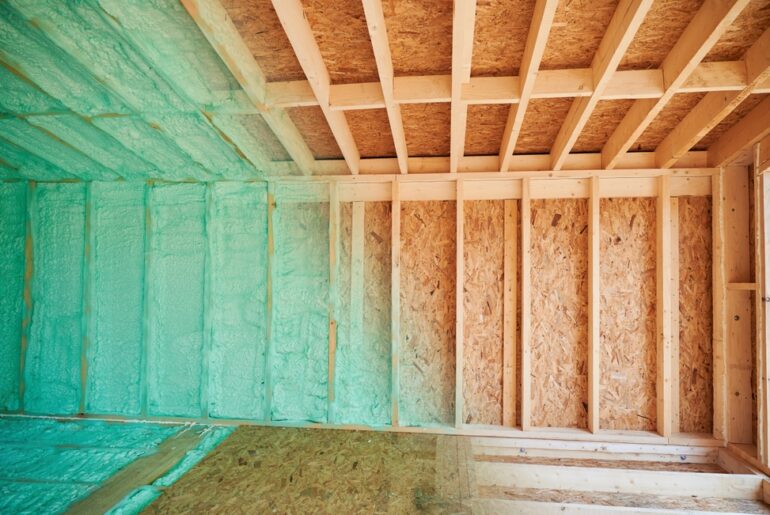Fitting foam board insulation to concrete walls can be done in a number of ways depending upon whether you are working on a new build, or a renovation retrofit project.
The insulating and moisture resistance of foam board insulation make it an ideal choice for external cladding to new concrete foundations or basement walls. For existing structures, it works equally well in the interior of a basement or crawl space.
We researched a number of the most practical ways on the market, that foam board can be attached to concrete using mechanical fixings, specialist adhesives, or a mixture of both.
Here’s our guide to attaching foam board to your concrete walls.
What Are Your Options?
It is standard practice these days to fit an inch or two of rigid foam board insulation to the exterior of a basement wall following any waterproofing agent. It is usual for them to be attached with a proprietary adhesive before graded backfill is added.
Mechanical fixings are not usually recommended in this scenario as the adhesive combined with the weight of the graded earth will ensure the insulation foam board stays put.
Internal remodel works
- Plastic Anchors
- Adhesive
- Masonry Screws
- The Plastic Anchor and Adhesive Combination
How To Prepare Walls for a Retrofit
Whatever system you choose for your foam board insulation install, the key thing is to ensure that the concrete walls are properly prepared and ready to receive the boards.
The first thing to check is whether there is any water ingress. Check for leaks or ponding. Make a survey of any plumbing in your basement or crawl space and ensure it is all properly maintained and in good order.
Make a survey of the foundations and concrete walls. Look for cracks. Minor shrinkage or crazing (when water in the concrete evaporates too quickly), and small vertical cracks are not normally a problem. However, horizontal cracks or long cracks running from the corner of the building, should be checked by a structural engineer before you cover it up with foam boards.
Remove all redundant fixings, nails, screws, pipe, and electrical brackets. Repair any dents and remove any excess mortar to ensure a flat surface for the insulation board to butt up against.
Use a soft brush to clean off any loose dust, cobwebs etc, from the face of the concrete and then use a concrete cleaner to finish off. If there is any evidence of mold, a light bleach solution should stop it in its tracks.
Option 1. Plastic Anchors
Plastic anchors are a straightforward mechanical fixing that is easy to get wrong. Make sure you are using the correct size masonry bit to start with.
Once the hole has been drilled, then ream out the hole to ensure there is no residual dust that might block the fixing. Plastic anchors are a friction fit, so they have to be snug in the penetration made, however, additional dust may either cause them to break, or not fit properly.
These fixings are ideal when installing a single layer of board behind a new framed construction of stud walling. Simply drill and hammer in and you’re done.
Option 2.Adhesive
There are any number of specialist adhesives that can be used in conjunction with foam board insulation, such as the Loctite PL300 Foamboard Construction Adhesive.
Simply apply a 3/16 bead of adhesive every 6 inches from one end of the foam board to the other. Press the foam board in place ensuring good contact with the wall.
Don’t delay too long when using adhesive as it should start to cure within ten to fifteen minutes depending upon the temperature. Don’t apply the glue to ten boards at a time and then expect the first board to adhere correctly to the concrete.
It is a good idea to prop the boards while the adhesive is curing to ensure the boards remain in full contact with the wall.
Option 3. Masonry Screws
Some of us might prefer to use a more traditional fixing, and that’s perfectly acceptable. A galvanized metal masonry fixing will last a lifetime and gives confidence to the user. The best way to use a galvanized masonry screw fixing is to partner it with a good size washer.
Before fitting the screw, put a little caulk into the hole drilled in the foam board to close any air gaps between the fixing and the insulation.
There is the possibility that galvanized steel masonry screws could transmit cold from the exterior of the house into the basement interior, so it would be wise to use a secondary moisture barrier if you are using this method.
Option 4. The Plastic Anchor and Adhesive Combination
By far the best way to make sure that the foam board insulation is properly fixed to the concrete wall is to apply a belt and suspenders philosophy. Using nylon plastic anchors and adhesive together means that you can use less of each for more of the benefits.
Use the adhesive to ensure that the board is sealed to the wall all the way around, then use two, perhaps three, nylon plastic anchors to grip the board back to the substrate.
Tips for Better Fitting
When cutting boards in a basement to fit between the floor and the joists above your head always allow at least a ¼ of an inch for fitting. The floor will likely not be precisely level at the wall edges, so be prepared for some fluctuation.
Once fitted, any gaps at either the top or the bottom of the foam board can be closed up using a low-rise spray foam. It is likely that you will also need to use spray foam to close gaps at the vertical corners too.
Many foam boards are supplied pre-scored at 12”, 24”, and 36” and will snap off cleanly at these measurements.
Polystyrene does not react well to some solvent based adhesive products, particularly acetone. Always make sure that the adhesive you buy is compatible with the foam board insulation product that you are using. Read the manufacturer’s instructions and recommendations on the packaging.
Use a contractor’s tape such as Weatherseal, to close up the joins between the boards. Most Styrofoam wall boards are shiplap jointed at the edges, making for a good seal, but it is worth taping these too.





